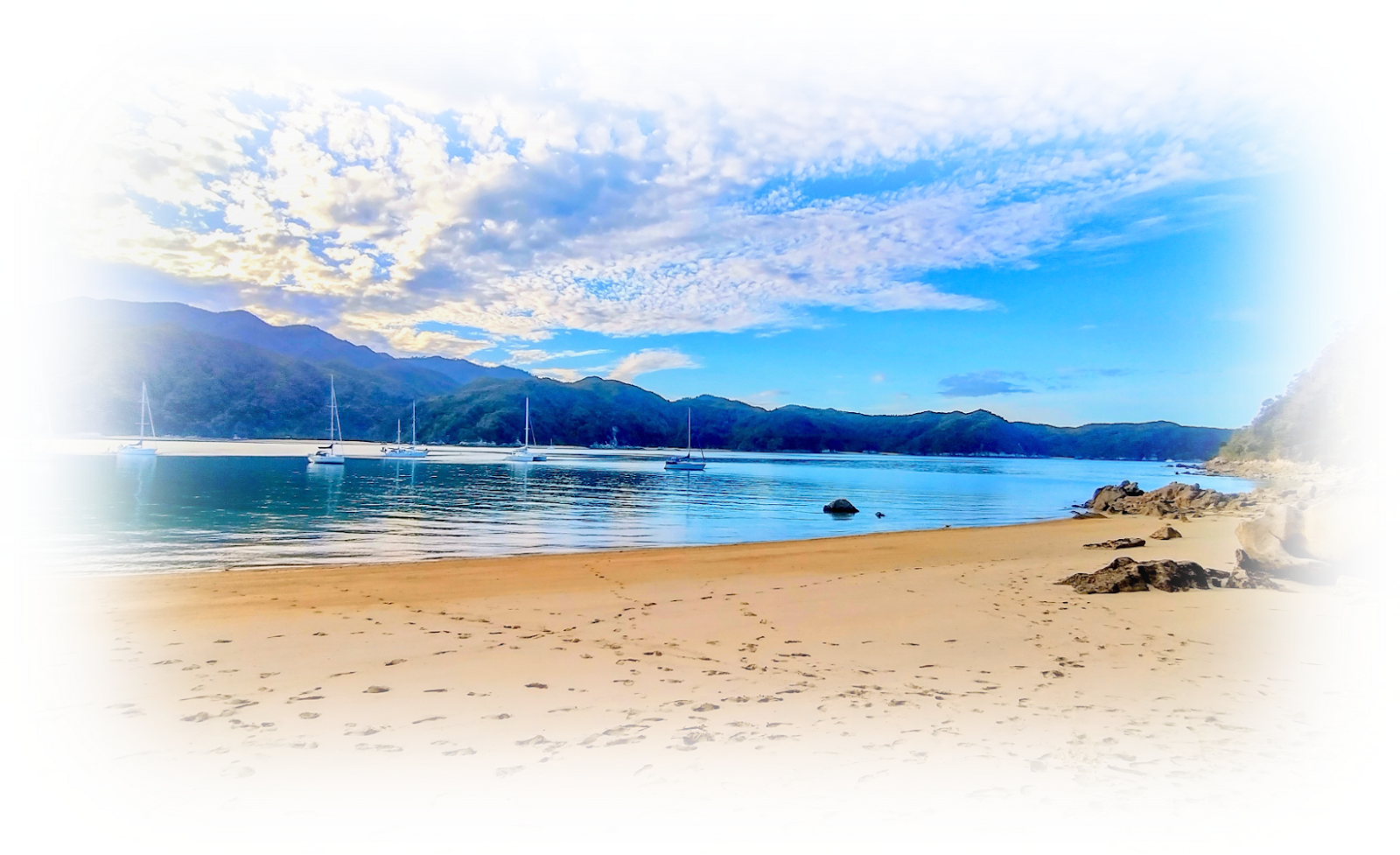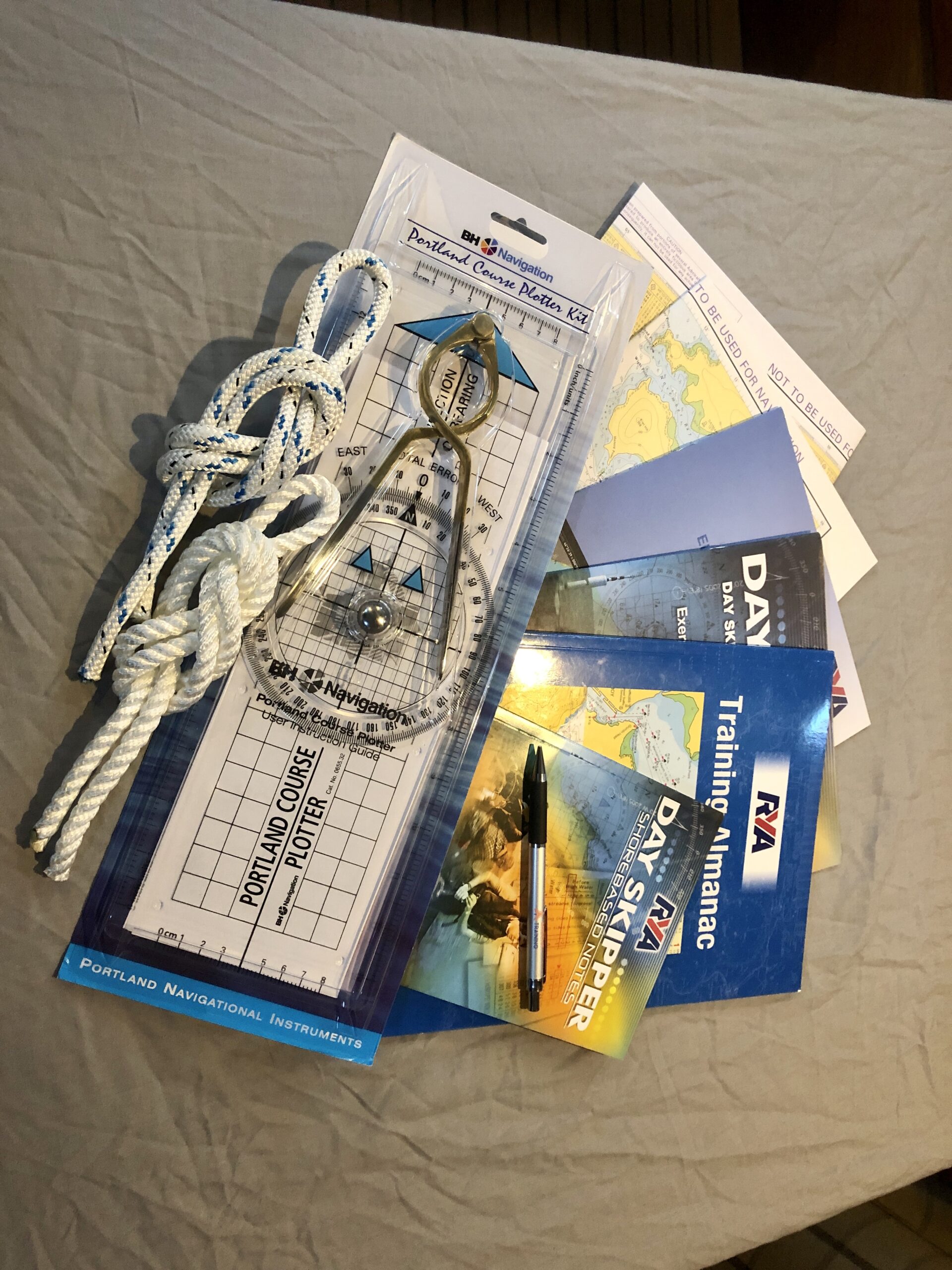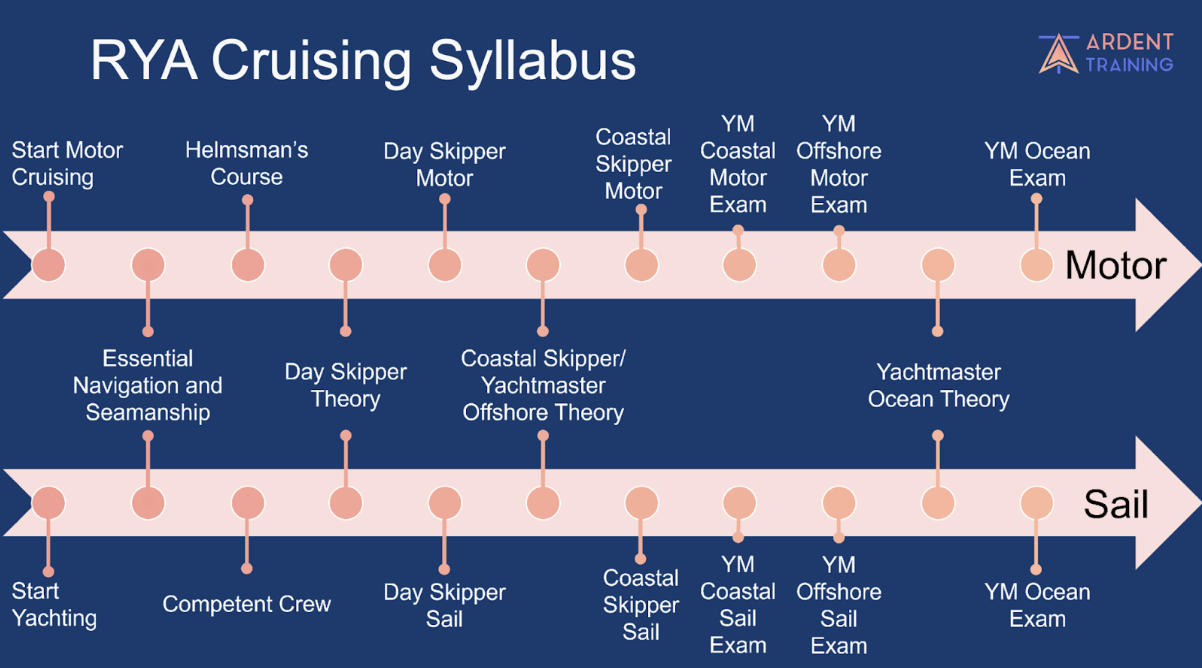
RYA Day Skipper Practical Sail Tips – How to Be Prepared
Being prepared for an RYA Day Skipper Practical Sail course is key in order to get the most out of your learning opportunity.
If you have not already done your RYA Day Skipper Theory, then you should do that first. You can find more information about our online course here; RYA Day Skipper Theory.
| Type | Residential |
| Duration | 5 days |
| Minimum Age | 16 |
| Experience Expected | 5 days a sea, 4 night hours, 100M |
What Is the RYA Day Skipper Practical Sail?
The RYA Day Skipper Practical Sail course is taught on board a cruising yacht of 7 to 15 metres in length. You will learn pilotage, navigation, seamanship and boat handling up to the standard required to skipper a small cruising yacht safely by day in waters which you are familiar with.
You can learn more about the RYA Day Skipper Practical Sail here.
What Is the Aim of the RYA Day Skipper Practical Sail
The RYA Day Skipper Practical Sail course allows you to put all the lessons learned in the RYA Day Skipper theory into practice and prepare you to be ready to skipper a vessel in familiar waters by day.
The aim is to bring you up to a level where you safely skipper a vessel in and out of a harbour and complete a short passage to another safe haven, be that an anchorage, harbour, or port.
Where Should I Book MY RYA Day Skipper Practical Sail?
There are various aspects to consider when booking and these include where you might sail in the future, where you might charter and what your end goals are in the RYA Cruising Scheme.
At Ardent Training we have various practical partners that can be found here.
You may want to pick somewhere close to home, somewhere you intend to sail afterwards, or somewhere you can call a holiday.
What Questions Should I Ask Before Booking?
Ideally you want to check how many will be on your course, 3 or 4 being a good number. 5, unless on a larger boat, is generally too many.
Will you be getting your own cabin or will you have to share. Sharing is common but of course, is not for everyone.
You will want to know what is included, food onboard being an absolute minimum. Logbooks should also be provided but often berthing charges are expected to be covered by clients and so it is best to check or look for places where this is included.
It is also nice o know who your instructor might be. A good training centre will have a pool of trusted instructors they work with and should be able to give you a couple of names and information about each of them such as we do with Ardent Training.
Finally, we want to know what the other clients will be doing on the course. Ideally, it works best when all students are on the same course, but suitable mixing can take place and for the RYA Day Skipper Sail, RYA Competent Crew students do mix well.
What Will I Do on My RYA Day Skipper Course?
You will want to know where you are going to be cruising to on your course. A good course will take you to various destinations each night, perhaps with a night on anchor, on a mooring, a marina and maybe even a wharf or pier. Going back to the base port each night is not suitable.
What are the timings of the course? As a 5 day course, the courses often start on Monday morning and finish on Friday afternoon, but some schools do offer different timings, such as splitting it across multiple weekends, so it can be useful to find one that suits you best.
Another point to consider is the climate you are sailing in. Courses in higher latitudes in winter can be subject to severe weather and stormbound days, while in the summer, these same schools will struggle to provide prolonged night navigation. Neither is wrong and it is more about being prepared and understanding what you might experience.
What Should I Take on Your RYA Day Skipper Practical Sail?
Again, the climate will dictate, but in general, we want to dress in layers, have suitable waterproof clothing, suitable and perhaps waterproof footwear and of course all of these want to be both warm and breathable. It is always colder on the water than it is on land, so always worthwhile taking that extra layer.
Warmer climates may mean taking swimming gear, sunhats and sunglasses while colder climates may need woolly hats and gloves.
Here we have made a couple of lists of extra kit than every day clothing to help you with your packing.
Colder climate extras:
- Sailing Boots
- Thick socks
- Thermal trousers
- Thermal top
- Quick dry clothing
- Warm hoody like top
- Buff / Neck warmer
- Woolly Hat
- Gloves
- Waterproof / Oilskins (Sometimes provided or available to rent)
Warmer climate extras:
- Breathable but safe footwear
- Swimming kit
- Peaked hat
- Sunglasses
- Sun cream
- Fingerless gloves (if you have soft hands, for handling ropes)
- Quick dry clothing
What Navigational Equipment Do I Need to Take?
While all equipment including charts, alamanacs and pilot guides should be provided on board during your course, there are a few extra bits of stationary that you can take to be suitably prepared.
These include any notes taken from your theory, a notebook or pad of paper for taking further notes on your RYA Day Skipper Practical Sail course, your own pencil case, plotter and divider if you have one and post-it notes or sticky notes can be super useful too.
If you do have any of your own kit for your own baot t is a good idea to take these so you can learn and practice with the same tools you will be using in anger. This could be a plotter and divider, handbearing compass or even your nautical almanac.
If the school has provided any course notes you will want to take these too along with your personal logbook if you have one (if not, the school should provide you with one at RYA Day Skipper Practical Sail level) and we recommend checking out our Ardent Training resources for any useful pro-forma sheets that can be used to sid your navigation.
Any Other Items I Should Take on an RYA Day Skipper Practical Sail Course?
A battery charger for your phone is often useful as there is not always power or USB ports available. If you have one, a dedicated camera is often nice to have as you will undoubtedly see some nice sights. Ear plugs can be useful if sharing sleeping spaces, as can a head torch with a red light on it for moving around at night.
A quick drying tool can be a great addition for numerous reasons too. There is not a lot of space underway for drying kit, but also, they generally take up little room too. It can be worthwhile investing a a good one of these.
While food and snacks should be provided it can also be worthwhile to take your own favourite snacks for when you need that extra energy boost. Coffee or tea lovers may also want to take their favourite brand too.
How Should I Pack for a Sail Cruising Trip?
Firstly, make sure you use a collapsible bag. Rigid suitcases are not only not suitable for boats but will generally not fit anywhere to store them. A bag that is easy to stow away is what is needed onboard vessels.
Then, pack your kit in sections, perhaps even have separate dry bags for your stuff so that these can be easily found.
Ideally, you want to be able to go down below and know exactly where that extra layer or hat is and be able to grab it quickly.
Finally, remember that you are sharing your living space with others and so ensure that you are packing your kit away and it is stored safely and tidily.
Knowing the Area You Are Sailing In
There are various resources to learn more about the area that you are going to be sailing in. One of perhaps the most available but least used is google maps. This can be used as a standard map, satellite map or even as google earth.
A more nautical resource to use is electronic charting apps for phones such as navionics and savvynavvy. Navioncs also has a great free web app for using their tool too, perfect for getting to know the sailing area you are going to visit.
Other useful ways to get to know the area you are going to be sailing in is to look for recognisable place names and even read up a little bit about local meteorological trends.
Pre RYA Day Skipper Practical Course Admin
Ensure you have filled in any course forms for the school. You will need a passport photo for your certificate at the end of the course, so ensure you have one to take with you.
Read all the joining instructions to make sure you have understood everything about your course.
What Can I Practise or Revise Before My RYA Day Skipper Practical Sail
One of the best tasks to practise before going on your RYA Day Skipper Practical Sail course is knots. These can be found here.
If you are going to use any phone apps on your voyage, then be sure to have practised with these before you go and also print out any pro forma resources that you plan to take with you.
Finally, ensure you have revised your theory, especially if you did it a long time ago. This will allow you to focus on the practical aspects of the course and not get bogged down in having to recover theory.
Checking the Weather and Tides
The day before you go on your RYA Day Skipper Practical Sail course is a good time to check not only the upcoming weather, but also to note down some tidal info too.
In the UK, the met office is the best place to get an inshore waters forecast suitable for going out on the water. Looking medium range into the surface pressure charts is also key since you are going to be onboard for 5 days. Other sources are useful too, watch our video on “which weather forecast” to learn more.
As for tides, imray tide planner can be useful but if in doubt, then it is best to wait till you are on the boat in order to use the correct sources.
What about When We Are on the Course?
The biggest tip for students is to get involved as much as possible, be proactive, and ask questions. Becoming a core part of the team onboard and showing enthusiasm will only allow you to get more out of the course. This includes but not limited to getting on with boat prep jobs, putting the boat to bed and helping to tidy away meals.
Again, note taking is going to be key. It will be an intensive course and so having notes to remind yourself afterwards will be key in your long term learning. The best way to be efficient with these is to note down what you did each day and any step by step instructions for tasks and boat manoeuvers.
You can also learn a lot from other students, watching their attempts at tasks, listening to their debriefs and applying the learnings in your work can really help to fasttrack your skill building.
5 Top Tips for When on the RYA Day Skipper Practical Sail Course
- Concentrate on watching the instructor or others on “How to Skipper”.
- Think carefully about throttle control when power handling.
- Listen to the step-by-step instructions.
- Always be aware of wind direction.
- Don’t be afraid to use the materials provided.
Dealing with Boat Life on Your RYA Day Skipper Practical Sail Course
As noted before, you will be sharing a sleeping and living space with others so it is important that all students are considerate and accommodating of others. Think about your cleanliness and hygiene, share duties both below decks and on deck and respect others.
It can not only be super nice to get off the boat but also a great chance to enjoy your own space and reset, so it is important to take these opportunities and have short breaks when the opportunity arises.
What Will Be Next After the RYA Day Skipper Practical Sail Course?
At the end of the course the instructor will give you a personal debrief. In this they will note your strengths and weaknesses while also noting the suggested next step.
You will now likely be in a position to progress your theory to the RYA Coastal Skipper and Yachtmaster Theory. The next practical course for you will be the RYA Coastal Skipper Sail but it will be likely you first need to put all your new found learnings into practice.
Chartering a vessel or sailing your own boat are the best next steps to do after this RYA Day Skipper Practical Sail course.


